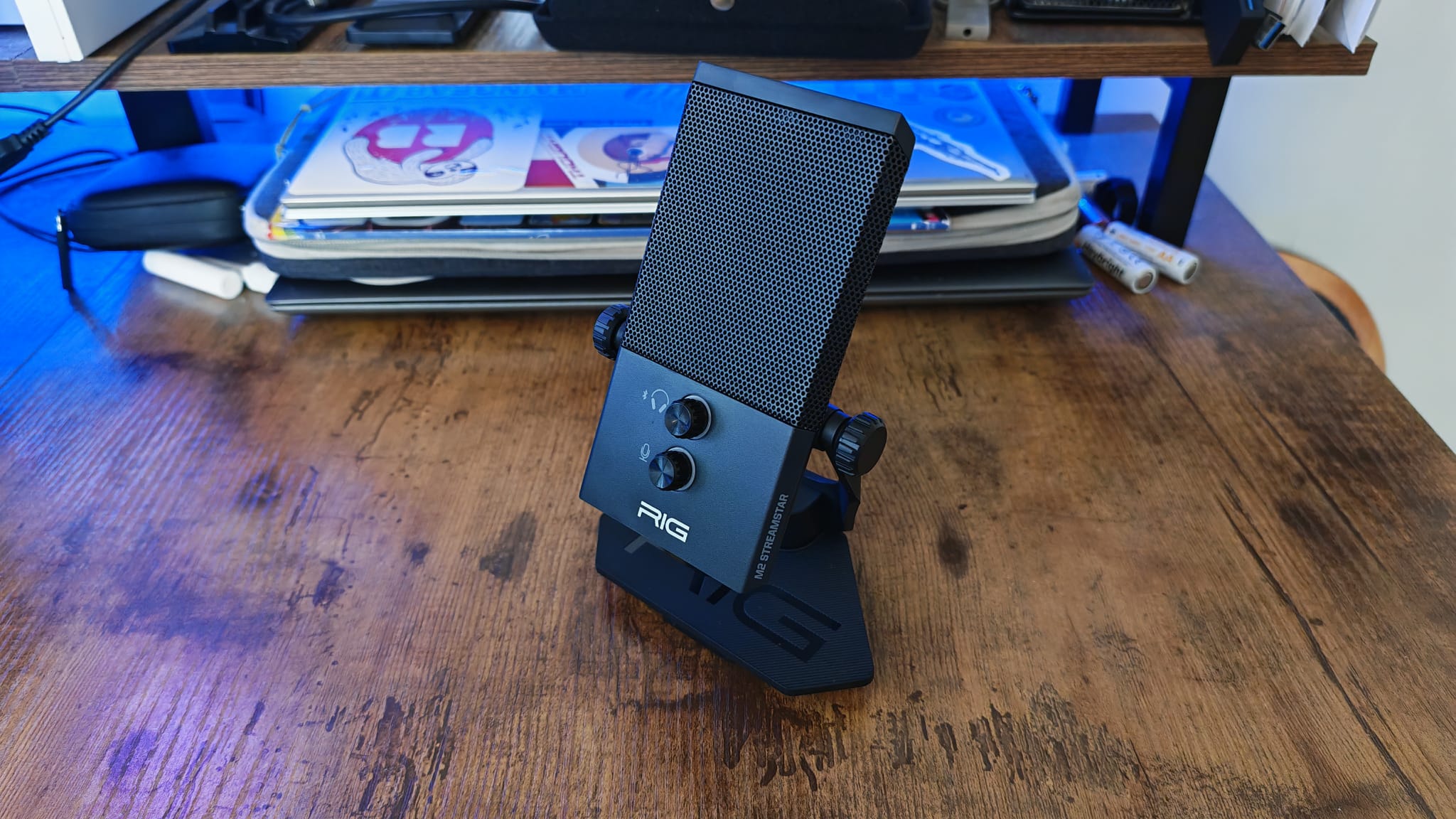GamesRadar+ Verdict
The RIG M2 Pro HD Streamstar has such promise, and makes the move the microphone market has been waiting for by having wireless headset pairing. That was the main draw of this microphone for me, but it really comes up short. As a microphone, there are good specs here, but gain issues and a slew of other missing features make it less than ideal for streamers. In the overcrowded and highly competitive USB microphone market, this is a product that's tough to recommend.
Pros
- +
Bluetooth headset pairing
- +
Decent mounting options
- +
Good sample rate options
- +
Fairly good sound quality if you can find the sweet spot
Cons
- -
Live monitoring doesn't work
- -
Bluetooth connection issues
- -
Plosive sounds distort
- -
Gain issues
- -
Light and cheap feel
- -
No software
Why you can trust GamesRadar+
I'll admit it; I like the sound of my own voice, because I think the most important feature on a microphone for streaming and gaming is live monitoring. Some people are really uncomfortable hearing a feed of themselves talking, others aren't bothered by it, but I think if you're trying to manage the audio of a livestream on the fly, it's massively important so you can keep things balanced.
The good news is that in the highly competitive USB end of the microphone market, there are loads of options that cater to this need. Even going back to four or five years ago, when the Blue Yeti and Blue Yeti Nano were ruling the roost, live monitoring was included as standard when you plugged in a headset. But there's an issue if you're trying to integrate a wireless headset into a streaming gear setup today, and it's getting your microphone's audio to feed through without a cable.
The RIG M2 Pro HD Streamstar's big appeal was that it was going to finally solve that problem. With a Bluetooth chip inside it, you could finally link a headset or pair of earbuds to the mic and hear a low-latency feed of all your PC's audio, with, I was told, live monitoring included as a part of that. For $130, you'd technically save a fortune compared to buying a streaming mixer thanks to this one feature - if it worked.
Design
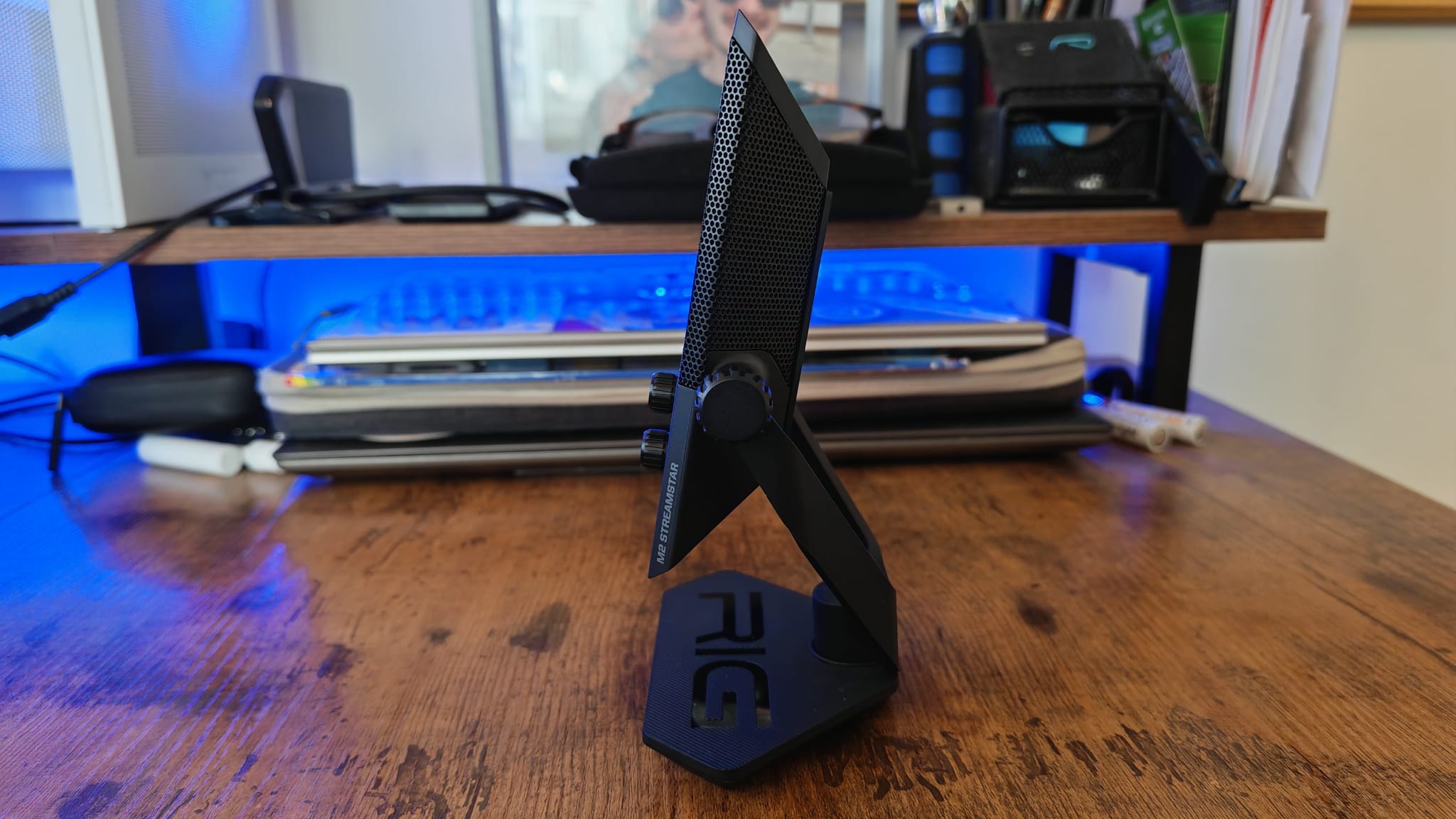
USB microphones designed for gamers and streamers can come in all shapes and sizes, and to stand out in the market, a few go over the top. The Razer Sieren V3 Chroma has flashy lighting, the Asus ROG Carnyx is obnoxiously tall, and the SteelSeries Alias looks... well, like it does. The Blue Yeti Nano is still my favorite budget pick, partly thanks to its smaller and low-profile design, but the RIG Streamstar is one of the few contemporary mics to remember that a smaller size can be a lot more practical for something that sits between your face, gaming display, and a camera.
I also like that RIG has taken a more angular approach. The sharp corners and rectangular face give this mic an almost retro feel to it, which I haven't seen since the RODE X XCM-50. The desktop stand it can be mounted to is great, even if it is a little too short for my liking. It all fits together very easily, though, and if you want to mount the mic to a boom arm or stand of some kind, it's very easy thanks to some intuitive threading.
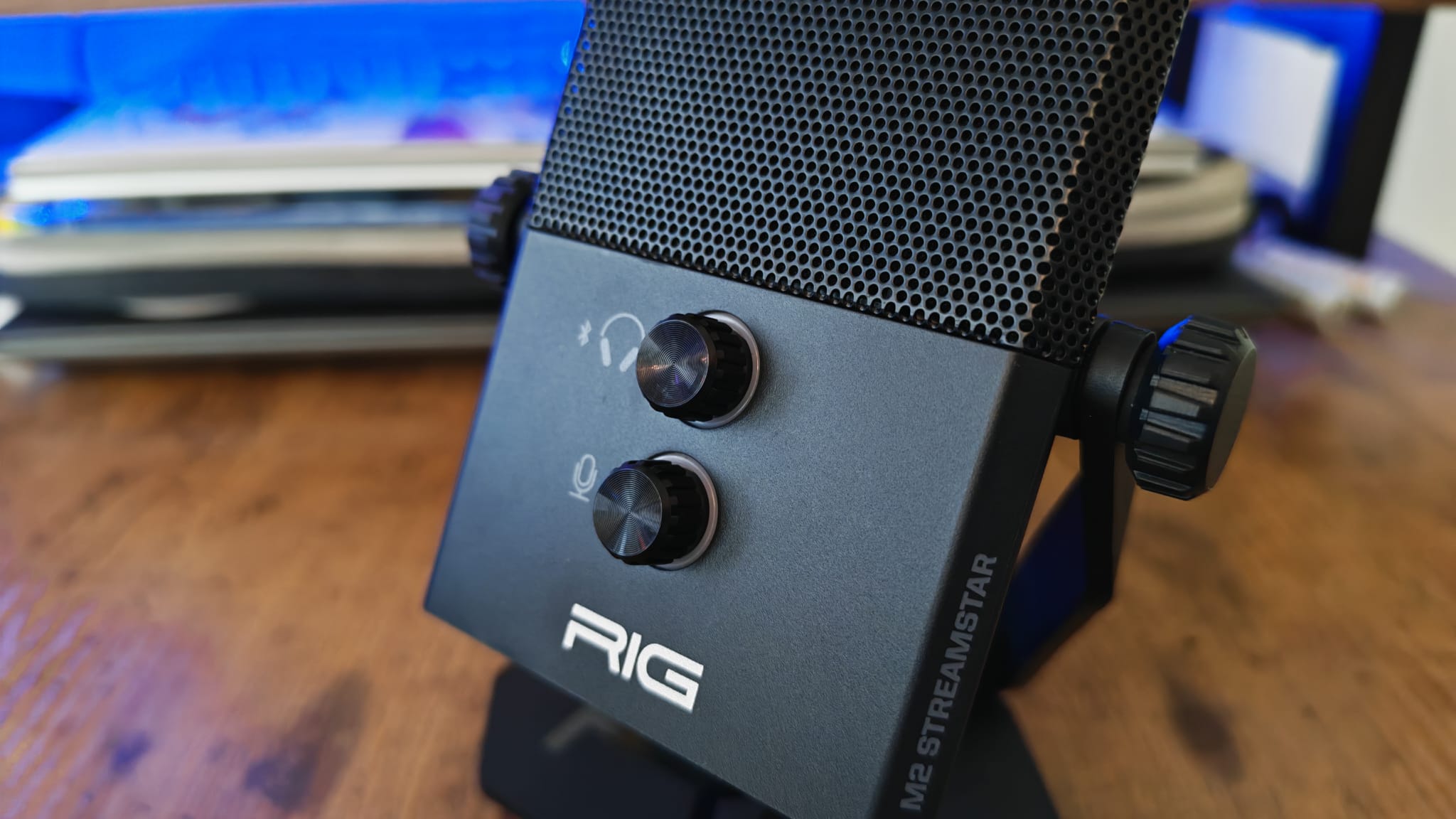
RIG put some handy multi-function dials on the face of this mic, just underneath its grille. The bottom knob controls gain levels, and the top controls volume for wirelessly connected headsets. Both can be clicked in to mute the respective input or output, and in terms of connectivity, there's a USB-C and 3.5mm port on the back. Although a USB-C to USB-A cable comes in the box, you can use a USB-C to USB-C connection if your motherboard ports call for it.
One detail some streamers might appreciate is that the magnetic RIG logo on the back can be removed or swapped out. This is great for creators who want a more minimalist setup that's free of brand names, but it's also great for professionals who don't want to show endorsements they aren't paid for.
Weekly digests, tales from the communities you love, and more
Features
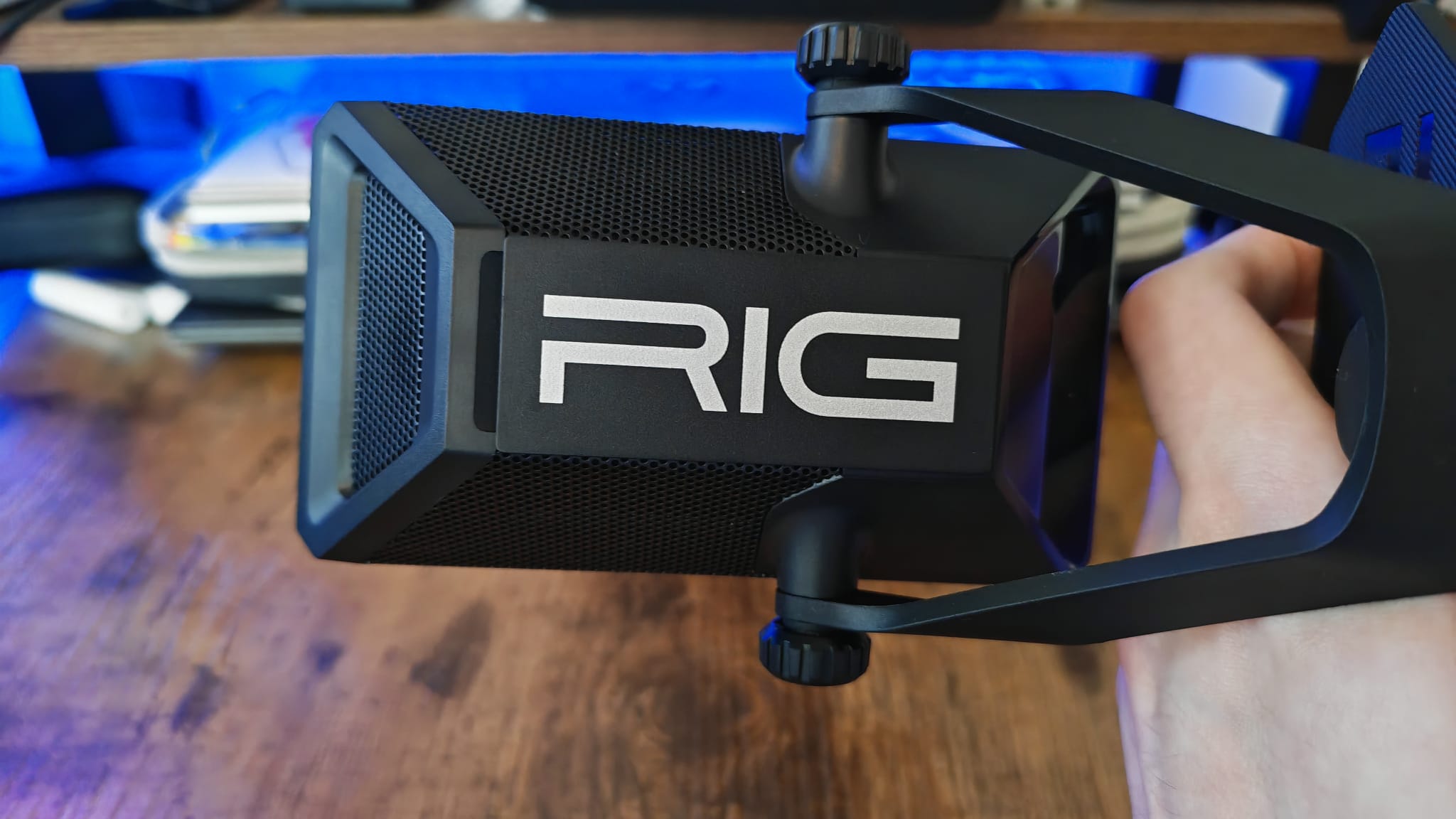
There's a bit of a mismatch between physical specs and features for this mic. The physical aspects of the M2 Pro HD are great, and put it on par with other options at this price range. Similarly, the Streamstar mic's Bluetooth support is innovative, and points to this being a forward thinking product. However, those specs, and this unique feature are both really let down by a lack of supporting software perks that feel like basic additions from the competition.
Nonetheless, that wireless headset connectivity is absolutely a headline feature that I'm sure will create a lot of interest in this microphone. There's Bluetooth 5.4 compatibility in this mic which means it's up to task for APTX audio devices. That creates a latency-free and lossless audio connection that won't interfere with your gaming audio, for the most part.
Inside the black chassis is a 16mm precision condenser capsule with a cardioid polar pattern and a 20Hz-20kHz response. There's a signal to noise reatio of >42dB, and a sensitivity of -37dBV. When it comes to sample rate, the Streamstar has what Nacon calls the highest digital resolution of any USB microphone at the moment. You have options for a 48, 96, or 192kHz sample rate with either 16, 24, or 32 bit depth.
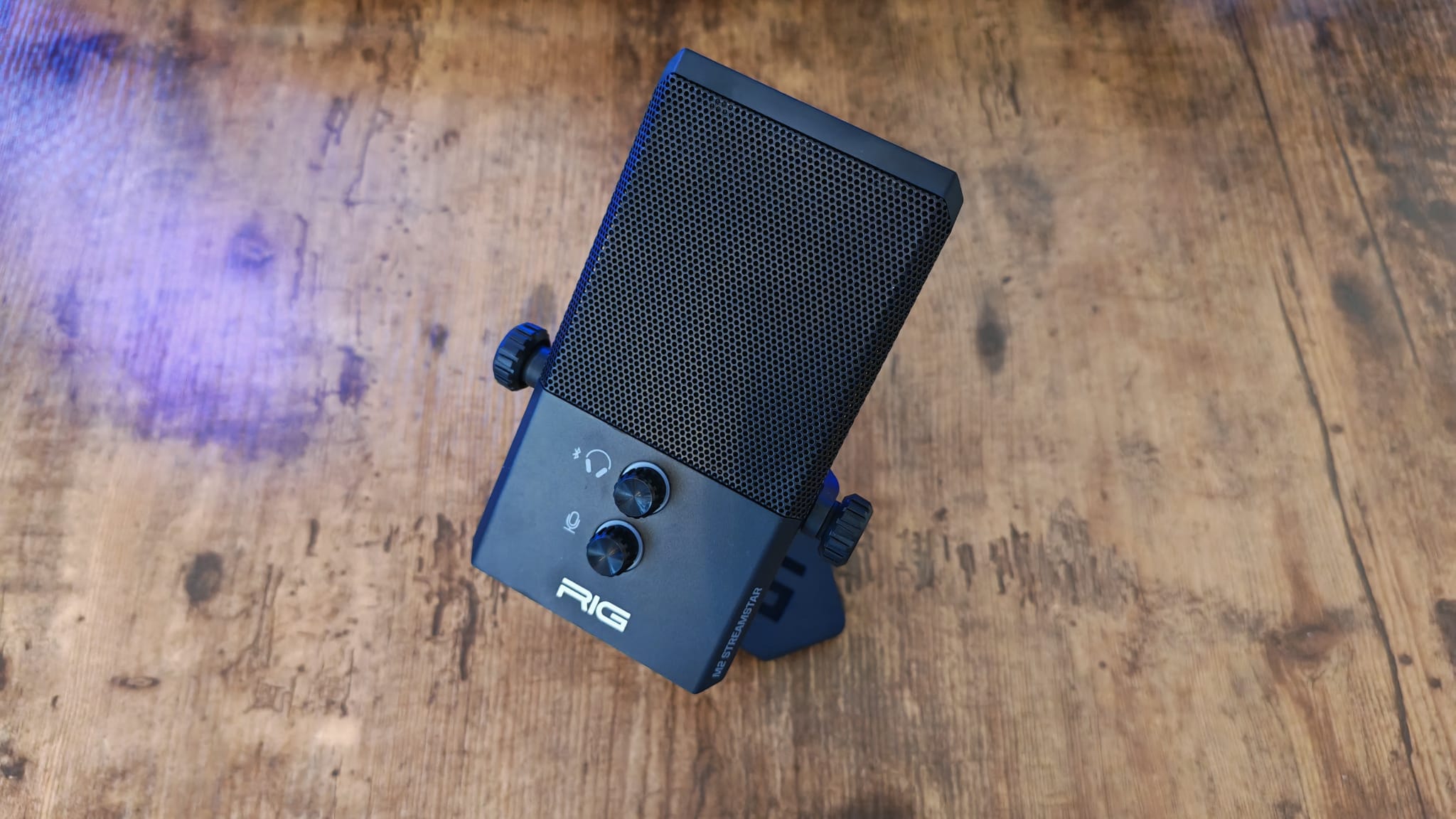
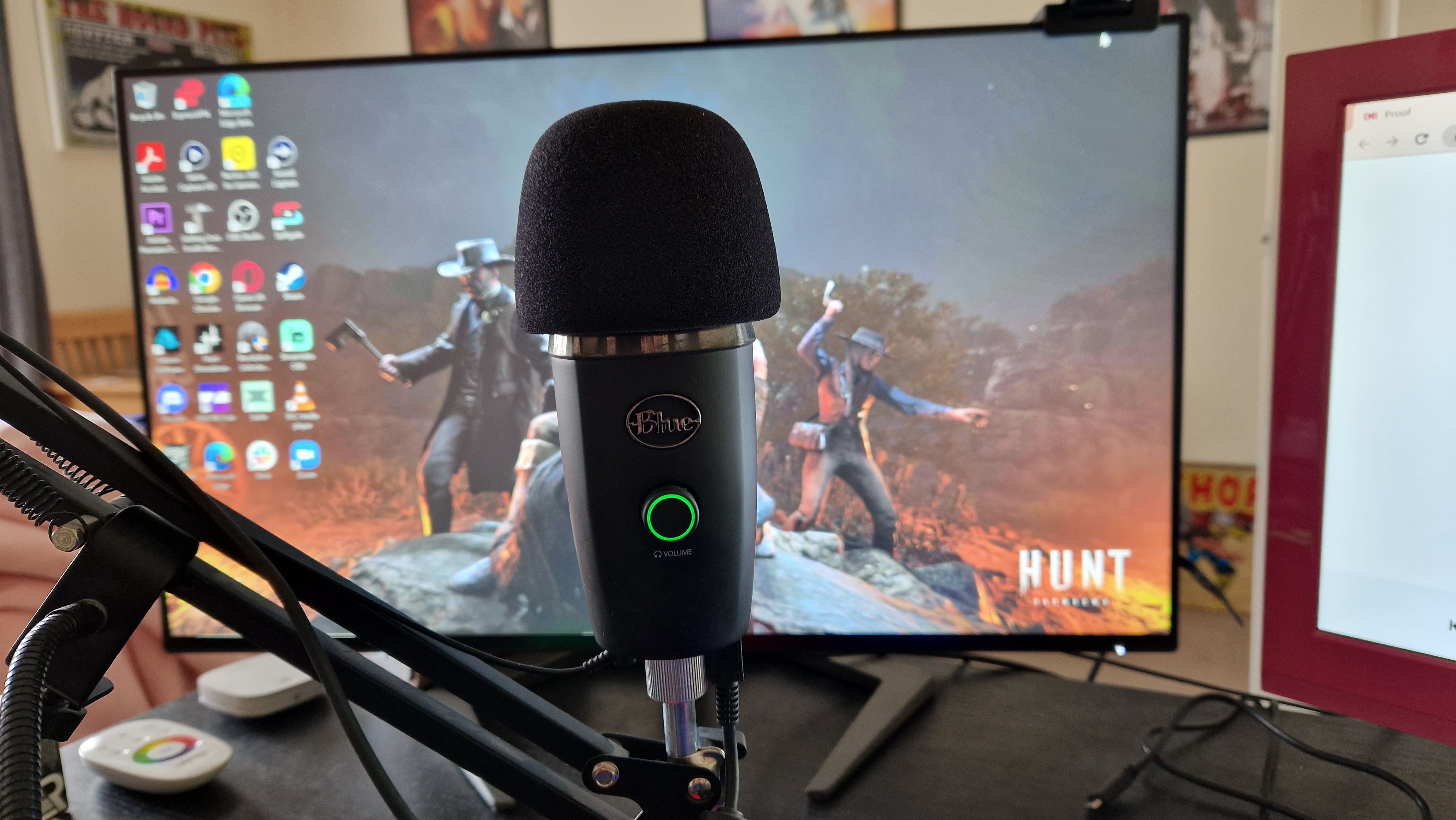
Looking for something a bit more reliable? I'd recommend the Blue Yeti Nano
Blue Yeti Nano:
US: $98 at Amazon
UK: £99 at Amazon
Unlike a lot of other gaming mics from big brands though, where I think Nacon has missed a trick is in not giving the M2 Pro HD any kind of companion software. Even if they don't have great onboard controls, other USB mics do have companion apps that can occasionally border on full sound mixing suites. I can understand this may not have been at the top of the priority list for a brand taking its first steps into the mic market, but fully captializing on wireless audio mixing by letting streamers manage their other audio sources on the fly would be massively helpful for a microphone like this. As it stands, without any software to speak of, it leaves the Streamstar feeling very empty. Windows has pretty lacklustre sound settings menus, and if I spent $130 for this mic only to be relegated to them, I'd feel pretty short-changed.
Without software, and without a wider ecosystem of streaming gear, I'm not convinced RIG or Nacon is fully comitted to this market, or whether its just dipping a toe in the water to gauge interest. Back when this mic released, I was told there would be a boom arm and potential audio interface coming soon, which I'd be really in support of. As it stands, I haven't heard any further news about those products, and since this microphone hasn't seemed to be received all too well on the whole, I wouldn't be surprised if RIG cancels the follow ups.
Performance
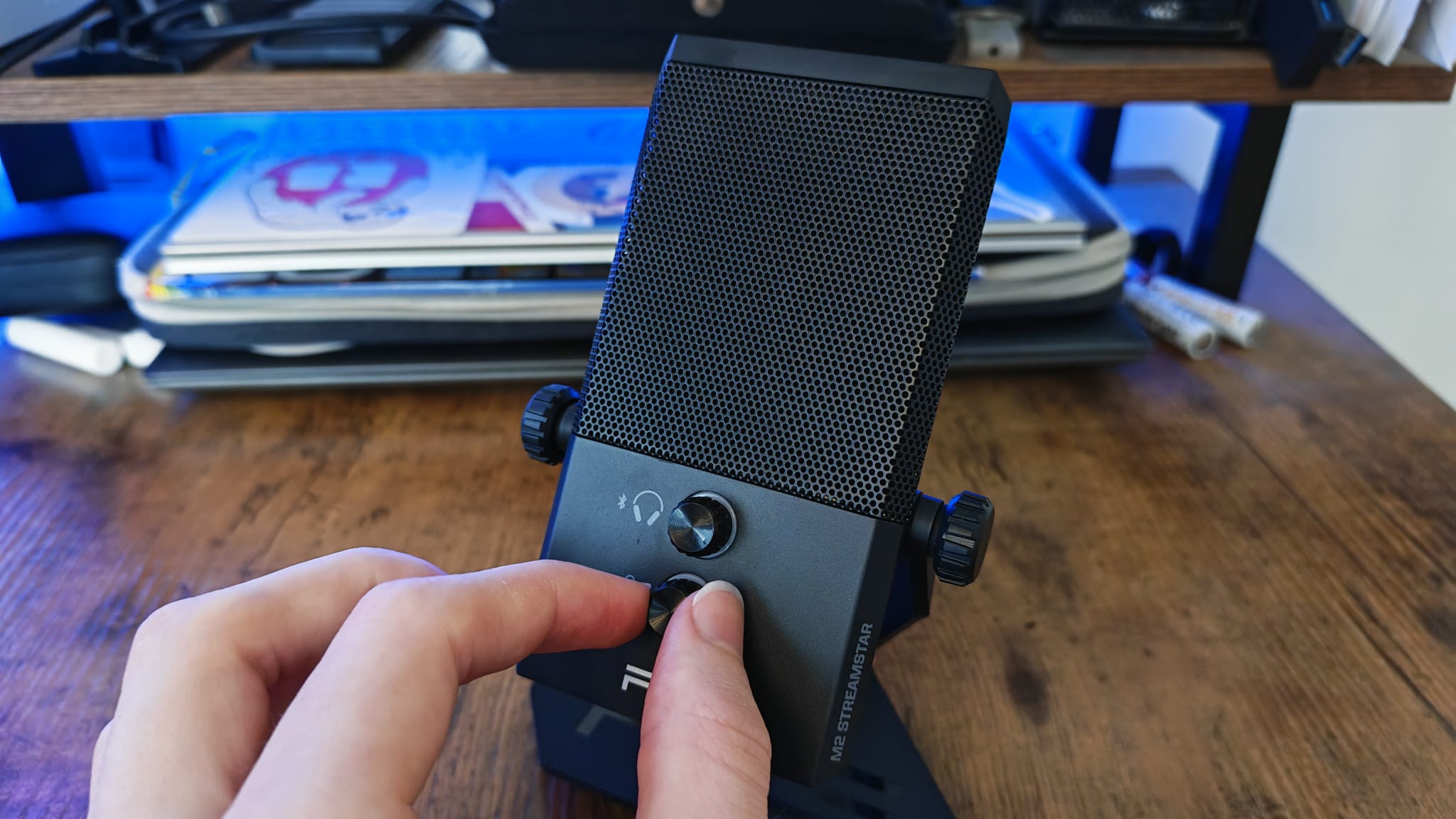
For the audio sample test, I've recorded you a pretty basic podcast of my thoughts on it. I recorded roughly ten minutes of audio to give you an idea of how it sounds, and I haven't added any effects or post production edits to it.
On the whole? I'm disappointed this mic didn't live up to its potential. The press briefing I went to before its release made it seem like the designers were crafting the Stremstar around very distinct problems. But in trying to simplify to solve those issues, they felt more present here than in any other USB option we've tested lately.
First and foremost, the live monitoring with a Bluetooth headset didn't work at all. In fact, I'd go so far as to say this mic doesn't actually have that feature, because it relies on you linking a headset, then going into the nitty-gritty Windows settings and configuring things so that you "listen to this device".

I tried using a wired 3.5mm headset, I tried a SteelSeries Arctis Nova 7 Gen 2 gaming headset, as well as some APTX compatible EarFun Air Pro 4 earbuds, and none of them managed to convey that live monitoring without latency. In fact, even following the setup video on RIG's YouTube channel to the letter, I could get that live feed of the mic's audio to play back at all with the SteelSeries headset connected via Bluetooth.
With no software drowining out background noise, and its desk stand doing a miserable job of mimicking a shock mount, the M2 Pro was picking up so much rumble from me touching my desk
Using "listen to this device" just isn't a solution. Live monitoring needs to be live, and even with a wired headset, I was getting more latency than was comfortable. It begins to feel as though you're hearing an echo of yourself, which is no short of headache-inducing after a few minutes of speaking. What's more, you have very limited ways of adjusting the level you're hearing, since the dedicated playback volume dial is for the entire mix of your PC's audio. When I was using a wired headset through the Streamstar, this dial didn't even adjust my headset's volume.
And this is what's most perplexing to me: Even using that wired headset, live monitoring wasn't a standard feature that had been built into the hardware of the microphone, which is super disappointing considering that you can get that from much older USB microphones.
Connecting a headset wirelessly did work, and from a brief run-in with some latency tests on YouTube, it seemed like I was getting all of my PC's audio with just under 10ms of latency. That's pretty darn good, and you're certainly not going to notice much of a lag for gaming, nor a delay in dubbing in videos of people speaking. The problem for me was the reliability of that connection.
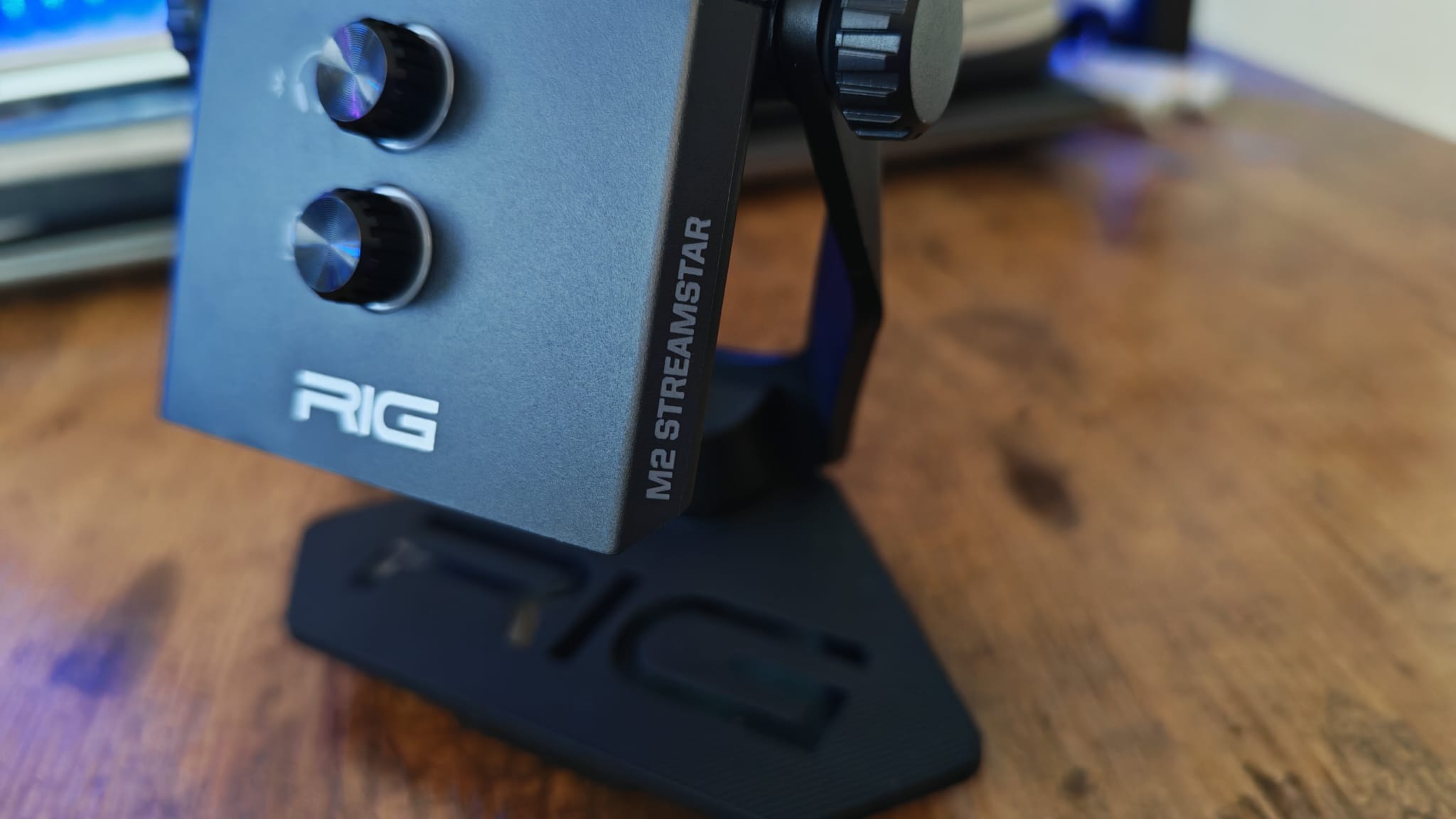
If I paused Spotify for a moment, I'd notice that the connection between headset and microphone would sever. Sure, it didn't take too long to reconnect, but this is the feature most people will be paying for, and it needs to be more reliable than that. Sometimes, when Spotify was playing music in the background of what I was working on, the audio would transition into very loud white noise, as though someone had knocked the jack slightly out of place in an amplifier - and boy, was that uncomfortable.
It was at this point in testing that I really started to doubt myself. Was there firmware, or drivers, or software that I was missing? I searched RIG's website thoroughly, and it was very clear that this was to be a plug and play device without any software support - and you have to wonder why. Even without dedicated software, the mic doesn't fulfill that plug-and-play promise, because you have to mess around in your Windows audio device settings to actually get its best features.
Even using the highest sample rate isn't an out of box experience, and you have to configure this in settings. I also found that the gain adjustment dial on the microphone itself wasn't reliable, as when recording in Audacity, the waveform being picked up was so tiny. If I turned the dial to the right, it would flash red at me, presumably indicating that it was at max level. In Audacity's recording settings, I could move the gain more reliably, but the higher I raised it, the more problems I noticed.
I really do believe that more microphones these days need to cater to wireless headsets, because as more and more modern playback devices skip wires, it's only going to get harder for content creators to manage audio.
I couldn't get the mic to register a level that peaked in the yellow without raising gain to around 85% in Audacity, but doing so invited hissy background noise into play. Sure, this mic is streamlined without software, but without any kind of digital popper stopping or noise gating, it was now distorting almost every plosive sound. This is absolutely a mic you're going to need to invest in a pop filter for, which other microphones in this price range don't rely on quite so heavily.
For a cardioid condenser mic that's designed for streaming, the pickup pattern really wasn't very generous. Even leaning back to about 12 inches away, the quality and gain dropped off massively, which isn't ideal if you want a facecam scene without a mic directly blocking your face. With no software drowning out background noise, and its desk stand doing a miserable job of mimicking a shock mount, the M2 Pro was picking up so much rumble from me touching my desk (which you'll be able to hear in the audio sample). That doesn't inspire confidence for streamers being rough on their mouse movements, keyboard presses, or in any way bumping into the mic by accident. I can't help but feel a really lightweight design is to blame there, since there's nothing guarding the capsule from those knocks vibrating straight into it. And since you need to have the gain set so high to get a usable level, you're going to run into those issues.
Should you buy the RIG M2 Pro HD Streamstar Mic?
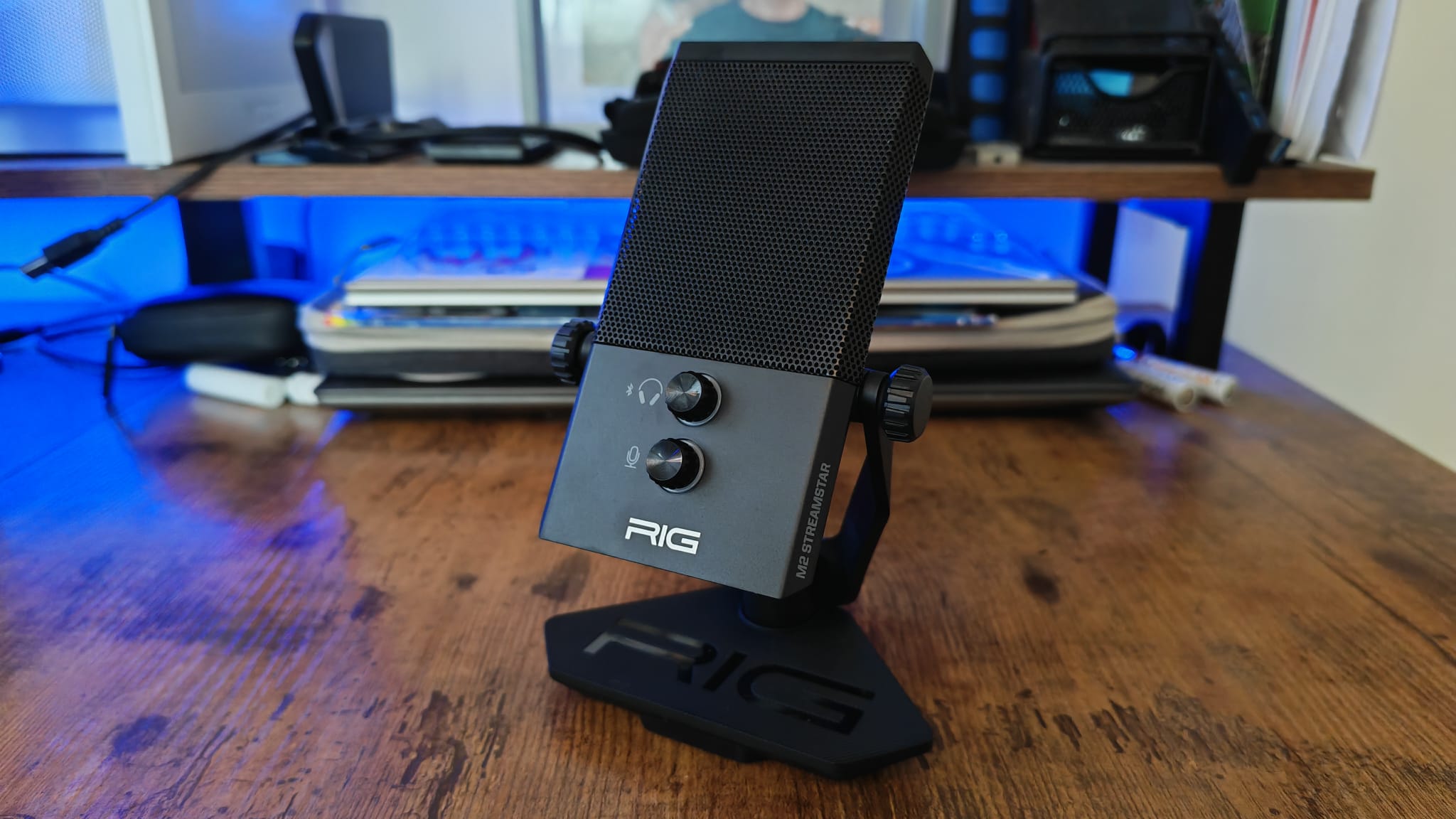
If you're careful with your distance management, you have a pop filter, and you don't mind not having great audio controls, there is really solid mic quality to be had here. But without so many of the software bells and whistles, and quality of life features from rival mics of this price, it's a tough one to recommend.
RIG clearly knew the problems it wanted to solve when making this microphone. Its designers talked a lot of sense when I had the pleasure of meeting them in a press briefing. I'm not sure if a lack of funding for this new venture was to blame, or dying on the hill of not using software was really the issue. One can only speculate, but it's a shame that overall, this microphone which had so much promise didn't manage to carve out a place for itself in the market.
Truth be told, I really do believe that more microphones these days need to cater to wireless headsets, because as more and more modern playback devices skip wires, it's only going to get harder for content creators to manage audio. RIG had a great opportunity to provide a solution to that issue here, but the Streamstar isn't it.
How I tested the RIG M2 Pro HD Streamstar
I integrated the RIG M2 Pro HD into my gaming and content creation setup for this review, and for secondary tests, I also used it with a laptop. I tried out the SteelSeries Arctis Nova 7P (gen 1 and 2), both in wired and wireless modes with it. I also paired the EarFun Air Pro 4 earbuds with the Streamstar as well. I utilized RIG's product support info on its website and YouTube channel, and used sound settings in Windows to test its various features.
For more on how we test the latest gadgets, check out the full GamesRadar+ hardware policy.
For more content creation tips, check out the best capture cards, the best ring lights for streaming, and the best webcams.
One of my earliest memories is playing SuperMario64 and wondering why the controller I held had three grips, but I only had two hands. Ever since I've been in love with video games and their technology. After graduating from Edinburgh Napier University with a degree in Journalism, I contributed to the Scottish Games Network and completed an Editorial Internship at Expert Reviews. Over the last decade, I’ve been managing my own YouTube channel about my love of games too. These days, I'm one of the resident hardware nerds at GamesRadar+, and I take the lead on our coverage of gaming PCs, VR, controllers, gaming chairs, and content creation gear. Now, I better stop myself here before I get talking about my favourite games like HUNT: Showdown, Dishonored, and Towerfall Ascension.
You must confirm your public display name before commenting
Please logout and then login again, you will then be prompted to enter your display name.
